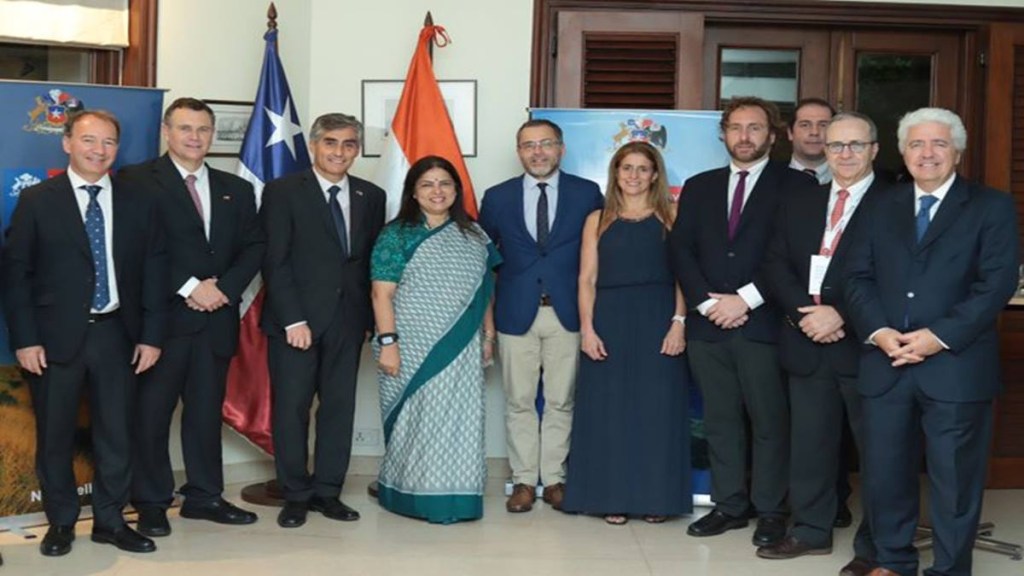As the Preferential Trade Agreement (PTA) between India and Chile continues to yield positive results, both nations are exploring avenues to deepen their economic ties.
In an exclusive interaction, Chilean envoy Juan Angulo sheds light on the ongoing negotiations for the second expansion of the PTA, highlighting the complementary nature of their markets.
“Due to that, we have been discussing its expansion, which is not a simple thing. If effective, there are certain steps to be taken previously. We need to receive the inputs from all the stakeholders, because any movement to deepen the existing agreement has to be in their favor, Ambassador of Chile to India Juan Angulo tells Financial Express Online.
Adding, “In addition, we need to check the opportunities of both markets, and then start the negotiations to decide what is a better way to concrete those opportunities.”
In an exclusive interaction ahead of the two day CII-LAC Conclave in the first week of August, the Chilean envoy Juan Angulo said: Chile and India have rather complementary markets, so we do not have issues in that respect, and we recognize the opportunities that both markets have to offer. So now, we have to establish the most convenient way to move forward in order to benefit the stakeholders from both sides.”
Currently the two countries are in the third round of negotiations for the second expansion of the PTA (the first expansion occurred in 2017).
Following are excerpts of the interaction:
What is the position of the bilateral trade between the two countries?
The signing of a PTA, in 2006, opened a new path in our economic relations, which allowed India and Chile to enhance trust in each other, in spite of the distance. For that reason, in 2017, that PTA was extended, allowing new concessions to be made.
Chile has a lot of points to offer to its trade partners in terms of its political stability, an effective rule of law, highly friendly business and commercial ecosystem and access to new markets, among others important factors that permit the building of trusts.
For those reasons, there have been negotiations for the new expansion of the existing PTA, and we also have recently signed an agreement to avoid double taxation and also a MoU to foster our cooperation in agriculture. All this will help the increase of the cooperation between our countries.
In fact, the MoU in agriculture not only permits the exports of agri products from Chile to grow, but also to collaborate with the local industries to exchange experiences and technologies. In that regard, since we have a counter station effect, which means that Chile is able to produce food that is produced in India because of the changed season, we expect to increase the agri exports so we can contribute to satisfy the needs of the Indian consumer.
What are the new areas you have identified to increase the bilateral cooperation between the two countries?
There are many. The good thing of holding meetings with the stakeholders, since they are in constant touch with their counterparts in Chile or vice versa, is that they are capable of prompting good ideas on new areas of cooperation. To name some, we are currently negotiating documents to enhance cooperation in areas such as disaster management and prevention of disasters, policies linked to disability, Information and technology and all matters related to ITC, cooperation in police matters, cooperation between regulatory bodies of the pharmaceuticals sector and in social security just to name a few.
Space & Defence: is there any cooperation in these sectors?
India and Chile have much to do in areas such as space and defense. We have been talking and working on those matters.
We appreciate very much the high technologies of India in space and defense. We congratulate India for launching the Chandrayaan-3 mission, which demonstrates the high level of the country’s development in the area. As well in defense, India has very high technologies and the world’s largest military forces.
Chile has been seen as the “eyes” of the world, because of its location, with a huge percentage (more than 70 percent) of the observation capability of outer space from the Southern hemisphere concentrated in Chile. Its policy of dark skies also contributes to host important observatories where major discoveries have been made, such as the first picture to a black hole, taken in the ALMA observatory, in San Pedro de Atacama.
Considering those, we have been working to connect the experts from both countries to share experiences, to take lessons from them, and to strengthen the ties. However, there is a big path ahead to walk; the institution was created in Chile last year and we are working to close the ties with the Indian institutions in the matter.
Lithium: any update if India is involved in either exploring or importing.
Chile is one of the countries with the most proven lithium reserves and the second world producer, which puts the country in a very good position for the future developments in this area. On the other hand, India is one of the leading countries in terms of technological development in relation to non-conventional renewable energy, like wind turbines, solar panels and electric vehicles.
Chile recently launched its National Lithium Strategy to increase wealth for the country, through the development of an industry that is key towards a global green economy.
Of course, some talks have happened. Each country recognizes the high value of the other and the complementarity of the industries. However, we have to keep discussing the best way to move on. India sent a mission to Chile in October 2019 where representatives of the Ministry of Mines, NITI Aayog and KABIL met the authorities of the Ministry of Mines and CORFO in Santiago and also visited some production sites in the north of the country. We hope to start conversations in this area.
